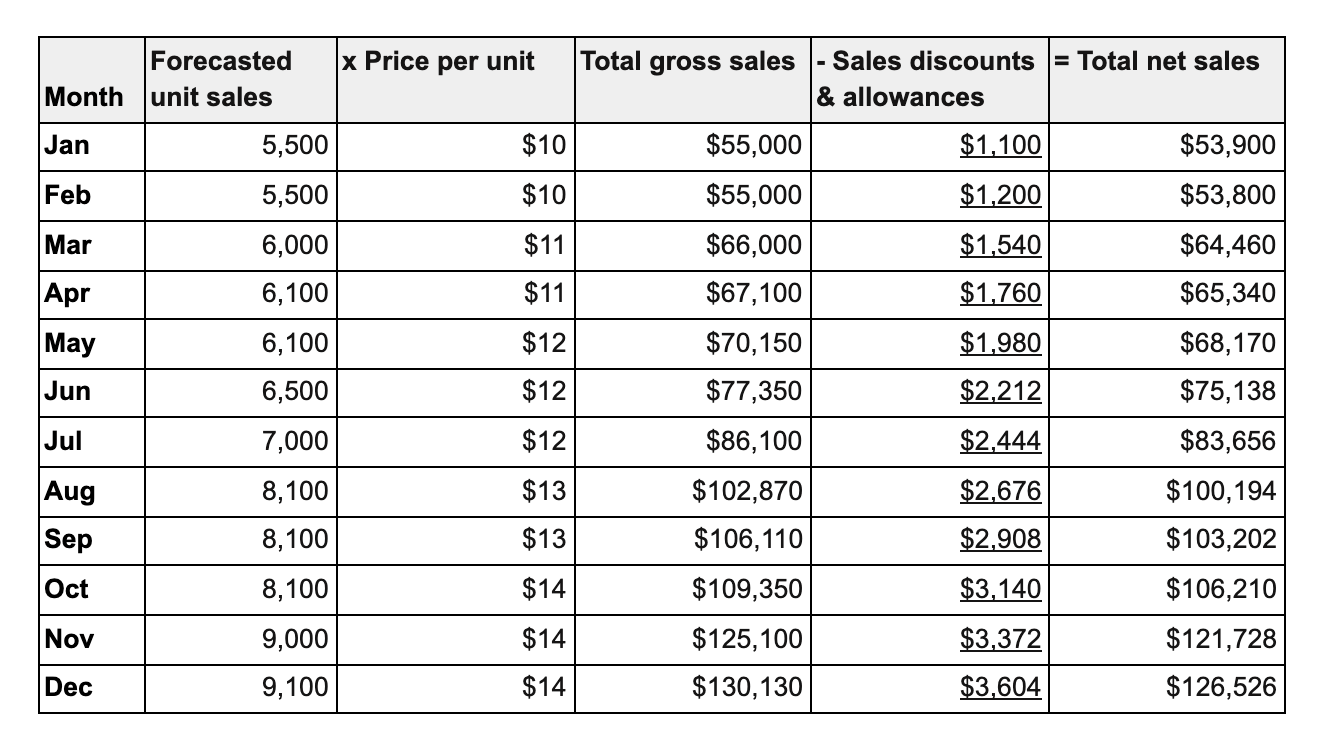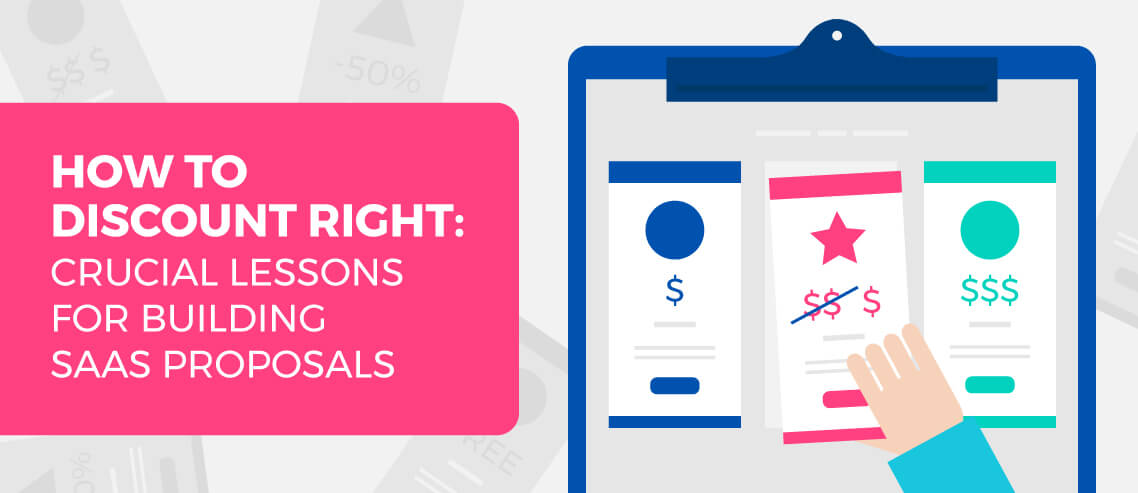Sales Budget: The Ultimate Guide for Sales Managers (with Template)

Contents
Preparing a sales budget can feel like an overwhelming task, but it doesn’t have to be as daunting as it sounds. In this article, we take a look at what exactly a sales budget is, why it’s important, and what it takes to create and prepare a sales budget yourself.
What is a Sales Budget?
Sales budgets are typically monthly or quarterly presentations of what a company expects to make in sales (both in dollar and unit amounts) for a specific budgeting period. These sales expectations are calculated based on various departments’ knowledge of the products being sold, as well as their expectations for the future.
For example, marketing department managers might provide information of upcoming holiday sales promotions which may drive more sales during that budgeting period than a sales budget during a non-holiday season. Product managers might make note of an upcoming release of a new product and how that might impact sales.
In short, preparing a sales budget is a team effort that requires a lot of cross-department collaboration and communication.
Objective of Sales Budgeting
The purpose of a sales budget is to set expectations for the sales period by leveraging resources and maximizing a company’s profit. It also acts as a planning tool that also allows specific departments to know exactly what to expect during the budgeted timeframe to leverage their own resources and coordinate effectively with other departments.
Sales budgets also provide sales teams a goal to strive for. Making more sales than what is expected in the sales budget is a favorable condition that results in an overall win for the company. That said, a lot more goes into creating a sales budget than just setting low expectations to get a “win”.
Components of a Sales Budget
If you’re involved in corporate planning, you are likely already well-aware that most collaborative planning takes place in a spreadsheet – rather, multiple spreadsheets. A sales budget is no different, but it’s best to find a spreadsheet that you’re comfortable working with. Using a spreadsheet that’s too simplistic might overlook some of the things that your company will need to factor in. Too complex, and you may get too bogged down in the details to focus on actually running your business.
Whatever spreadsheet you use, your sales budget should at least include the following elements:
- Income Statement: Reports net income, providing insight into a company’s overall operational effectiveness. Mathematically calculated: Net Income = (Revenue + Gains) – (Expenses + Losses)
- Balance Sheet: Reports a company’s assets, liabilities, and shareholders’ equity during a specific budgeting period.
- Cash Flow Statement: Put plainly, a cash flow statement reports inflows of cash received and outflows of cash spent.
All three of these elements will help drive the creation and upkeep of your sales budget. Find or create templates that work well for you and your business. These spreadsheets will provide invaluable insight while you’re creating your sales budget.
How to Prepare a Sales Budget
Besides having a handle on the basic components that go into creating a sales budget, there are still plenty of other considerations that need to be taken into account. Here’s a step-by-step guide for setting up your sales budget:
1. Select a Period for the Budget
Your first step is to decide what time period you want to budget for. Try to go with a monthly or quarterly budget. Annual sales budgets offer a better high-level overview from a full-year perspective, but might miss out on some of the more nuanced details that can be picked up in a monthly or quarterly budget.
2. Gather Products and Sales Prices
Take inventory of all of the products that you’re currently selling and the price that they are currently selling for. If you have any upcoming new products that you’re planning to sell, be sure to note that information, as well as any upcoming price changes to your current product offerings.
3. Take a Look at Historical Sales Data
Pull any previous sales data you may have that aligns with the timeframe that you’re creating for your sales budget. For example, if you’re creating a sales budget for July of this year, pull sales data from July of the previous years. This is an easy way to set expectations for your sales budget while also being an opportunity to identify sales trends that you can apply to your overall sales strategy.
4. Look at Industry Benchmarks
Get an idea of what the rest of the industry looks like by taking a look at the benchmarks and sales data of other companies in your industry. The U.S. Bureau of Labor Statistics provides financial data for public companies on its website. This is an especially valuable step if you are a new business that doesn’t have historical sales data.
5. Factor in Market Trends
Although historical sales data provides insight into how your company has trended in the past, it doesn’t necessarily guarantee that trend will continue. Take a look at the actual market trends within your industry – both past and present – to ensure your expectations align with what’s happening in your industry.
6. Consider the Size of Your Sales Team
Sales reps will ultimately drive your sales so make sure to factor in the size of your team to ensure your sales budget aligns with your sales team’s capacity.
7. Talk to Your Sales Reps
Talking with your sales reps is a great way to set expectations since they are the ones dealing with customers directly. They are also likely a wealth of knowledge when it comes to gaining insights about current market trends.
8. Talk to Your Customers
Interacting with your customers directly is also a great way to learn more about their expectations, as well as what they may be planning on purchasing from your company in the future. This can have an added bonus of building positive relationships with your customers, which can lead to repeat business.
9. Evaluate Your Sales Prospect Numbers
Prospective customers will play a large role in setting up your expectations. Take a look at the percentage of prospective customers that were converted into actual sales from a previous similar sales period and compare it with your current sales funnel.
10. Create the Budget
At this point, you should have plenty of insights to start building out your sales budget. Be sure to keep reviewing your budget throughout the sales period to make sure everything is on track or if you need to make any on-the-fly adjustments.
Example of a Sales Budget
Here are some examples of a sales budget to give you an idea of how they can look:
Example #1

This example is about as simple as it gets, capturing total budgeted sales for each quarter based on how many units are expected to be sold multiplied by the unit selling price. This is a great starting point for a sales budget, but it is recommended that you factor in other considerations such as potential sales promotions. Of course, there may be deeper context behind these expected sales numbers depending on if additional due diligence has been conducted.
Example #2

In this example, we see that the price per unit is scheduled to increase over time. We also see that promotional sales are included on this sales budget, which ultimately impacts the expected total net sales. Having this information available is helpful for knowing what, if any, changes are coming up, empowering your sales reps to know what kind of details they should include in their sales pitch when meeting with clients.
Example #3

Similar to Example #2, this table shows how a monthly sales budget can be a bit more detailed. It shows off expected numbers for individual months rather than quarters. In this example, sales should ramp up throughout the year. But the increases aren’t quite as dramatic as they are when captured quarterly.
Sales Budget Template
Ready to start? Take a look at our sales budget template to see how easy it is to create your own. Be sure to follow the steps above while creating your sales budget, keeping in mind that some might be more applicable to your business situation than others.
This is just a starting point, though. Be sure to take the steps that make the most sense for you and your company.
Conclusion
Creating and maintaining a sales budget is a great way to proactively prepare for the future success of your business. It will give you valuable insight into where your business has been, what’s happening in the rest of your industry, and help you keep everything on track.





